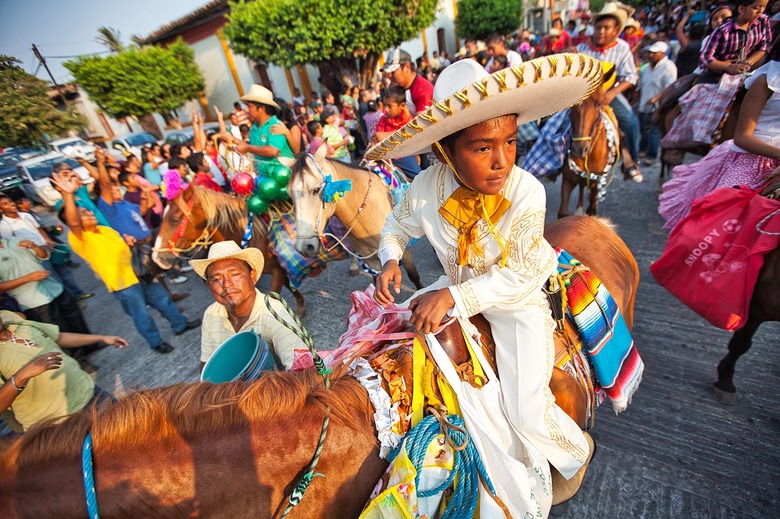Juchitán, Mexico, Photo Tour
Street food, moles and all things colorful and delicious
Oaxaca is a riot of color and food, and a myriad of indigenous cultures. It's the sort of place where it's not out of the question to want to start planning your next trip as soon as you land.
But outside of the bucket list destinations of Oaxaca City and the beaches of Puerto Escondido lies a little-visited town far down the Isthmus of Tehuantepec region—where the land pinches together before funneling off into Chiapas and the Yucatan—called Juchitán de Zaragoza.
RELATED Chefs Aren't the Secret to Mexico City's Top Restaurants "
Mostly populated by the indigenous Zapotec people, Juchitán is like no other place. For one, women run the show. The town has long had the reputation as a matriarchal society, and is known most famously for its muxes—an accepted third gender category unique to the Oaxaca region and the indigenous Zapoteca culture. The festivals, meanwhile, called velas, are days-long throwdowns of dancing and mass-scale cooking by armies of helpers; the food itself is like nothing you've ever seen in the rest of Mexico, with nary an enchilada or taco in sight.
Plunge into this visual tour of Juchitán's food culture to understand why it belongs on the itinerary for your next trip to Mexico.
Todd Coleman is the creative director and editor-at-large for Tasting Table. Follow him on Instagram at @toddwcoleman.
Workers at Las Tres Tecas, a seafood restaurant near a lagoon outside of Juchitán de Zaragoza, dig into crabs cooked in an adobo of achiote, cumin and garlic.
A cook in a fonda inside of the market near the town square ladles out a bowl of caldo de pescado (a rich, spicy fish soup) early in the morning.
A selection of botanas (or "little snacks"), including fried fish and corn cakes called garnachas, is sold at the market.
In a scene seemingly from the past, a water buffalo pulls a wooden cart past the row of fruit stands that lines the road into Juchitán de Zaragoza.
In a small kitchen, built out of mud and thatched twigs away from the main house, a fruit seller stokes a fire to make battered fried fish in a spicy tomato sauce.
Juchitán is rife with seafood, and it makes its way into virtually every dish. This pico de gallo is mixed with tiny dried shrimp, which add an unmistakable umami boost. The salsa is most often served on baked corn tortillas, called totopos.
Made from fresh corn masa and filled with shredded chicken and tangy salsa verde, these empanadas were fried in large batches for a festival.
Outside of Juchitán, a group of women take a break from cooking to socialize at the home of their mayordomo—the woman elected to run all of the food preparations for that night's festival.
A festival cook stirs a mole—a sauce made from ground nuts and chiles—in a large cazuela over a blazing wood fire.
Two cooks mix a large batch of puré de papas, a baked potato casserole (very much like ensalada rusa but baked until a crust forms on top), for a large party.
A large group of women, who have gathered all day to cook for a vela (or celebration) that night, band together to squeeze all the lime juice necessary.
The brightly colored salsa is made from guajillo chiles (made by drying mirasol peppers) and peanuts.
A night vendor prepares el bupu, a Zapotecan drink made from whipping together fermented corn and chocolate into a creamy foam.
A young boy dressed in his finest caballero outfit rides his horse in a massive parade called a regada de frutas, held during the festival time between May and September.
Fishermen preparing to go out on the lagoon near the resto, Las Tres Tecas, are serenaded by a wandering musician.















